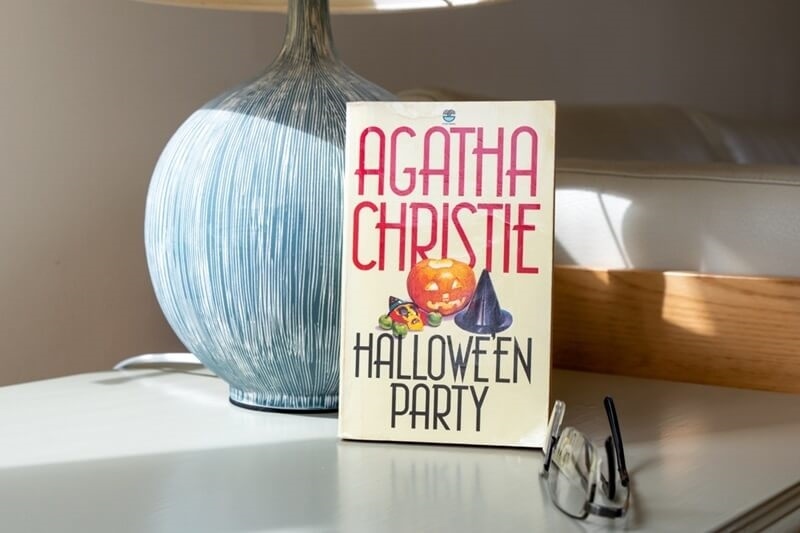Top 10 Cookbooks: Recipes You'll Love to Cook and Share

Every kitchen would benefit much from cookbooks, which provide not just recipes but also direction, inspiration, and the knowledge of seasoned cooks. They enable chefs of all degrees enhance their methods and widen their gastronomic horizons by bridging the gap between innovation and heritage. While experienced chefs use them as creative starting points for experimenting with various flavours and cuisines, beginners find them to offer a disciplined method of learning the foundations. Excellent cookbooks include stories, offer cultural insights, and establish a close relationship with the art of cooking going beyond mere directions. Each of the five basic cookbooks below offers special value and great ideas for any kitchen.
1. Rombauer Irma's "The Joy of Cooking"
For decades, The Joy of Cooking by Irma S. Rombauer was the pillar of American kitchens; it is a timeless masterpiece that has endured. Originally published in 1931, this book is a go-to source for cooks of all stripes since it presents a large body of recipes and concepts. It provides a reference for more sophisticated dishes as well as an introduction to cooking principles. Its revised versions have maintained the appeal and utility of the original while include contemporary recipes and dietary concerns, hence ensuring its relevance. This book gives the confidence and skills required to succeed for anybody learning the ropes of cooking or looking to increase their repertory. Signature dishes like the traditional beef stew show how well it can simplify even difficult dinners so they are fun.
2. Samin Nosrat's "Salt, Fat, Acid, Heat"
By dissecting cooking into four basic components, Samin Nosrat's Salt, Fat, Acid, Heat transformed people's perceptions of the craft. Nosrat imparts the fundamental ideas guiding taste and texture in every meal, not only recipes. Her method helps readers to cook naturally, using these components as tools to hone any recipe. The book, which is written in an interesting and friendly manner, seems like a chat with a smart and encouraging guru. Illustrated brilliantly, it simplifies difficult ideas. This book is a manual to help one master the science of cooking, not only a set of recipes. One of its best dishes, the buttermilk-brined roast chicken emphasises how much a thorough awareness of these components can turn basic materials into something spectacular.
3. Julia Child's "Mastering the Art of French Cooking"
Remarkably a timeless reference to French cuisine, Julia Child's Mastering the Art of French Cooking offers evidence of the art and accuracy of cooking. Published in 1961, this two-volume collection exposed Americans to the nuances of French cuisine, turning house kitchens into areas of gastronomic inquiry. The book painstakingly details classic methods including baking delicate pastries and creating faultless sauces, therefore enabling home cooks. Every page shows the child's love of food and education, which transforms apparently difficult dishes into doable tasks. Her ability to demystify French cuisine is best shown by dishes like Boeuf Bourguignon, which let readers produce restaurant-quality meals in their own homes.
4. Marcella Hazan's "Essentials of Classic Italian Cooking"
The treasure mine of real Italian recipes and techniques is Marcella Hazan's Essentials of Classic Italian Cooking. Called the "Julia Child of Italian cookery, Hazan deftly and precisely brings the tastes of Italy to life. This book stresses the need of using fresh, premium ingredients and conventional techniques to produce meals with flavour and satisfaction. Hazan's friendly attitude makes Italian food reachable for cooks of all degrees of expertise. A deceptively basic but incredibly delicious meal, her tomato sauce with onion and butter recipe has become a mainstay in households all around. Anyone wishing to delve into the core and soul of Italian cuisine should definitely have this book in hand.
Read More: Top Mystery and Thriller Novels: Key Reads for Every Fan
5. J. Kenji Lopez-Alt's "The Food Lab: Better Home Cooking Through Science"
The Food Lab by J. Kenji López-ALT is a revolutionary piece combining scientific accuracy with culinary beauty. This book delves deeply into the "why" underlying cooking methods so that readers may grasp how to get consistently excellent results. While López-ALT's recipes show how science may improve daily cooking, his excellent explanations and thorough graphics help to make difficult ideas understandable. This book offers the tools and information to succeed whether your focus is honing a pan-seared steak or trying sous vide. Anyone who enjoys experimenting and learning in the kitchen must have this since it combines imagination with a rigorous cooking technique.
6. Plenty by Yotam Ottolenghi
A revolutionary cookbook redefining vegetarian cooking is Yotam Ottolenghi's Plenty. Ottolenghi stresses the natural beauty and adaptability of vegetables while yet well-known for his vivid and savory dishes. The book is easy to study and try since it is split into parts depending on important elements such grains, roots, and greens. Inspired by Mediterranean and Middle Eastern cuisines, Ottolenghi's style blends strong flavors and inventive techniques. Although the recipes sometimes call for unusual items, home chefs can easily get them since they have simple directions to balance them. Simple veggies may be turned into spectacular feasts with dishes like roasted aubergine with saffron yogurt or caramelized garlic pie. Plenty is not just for vegetarians; it's a celebration of vegetables that suits everyone trying to vary their cuisine.
7. Ina Garten's Barefoot Contessa Cookbook

A timeless masterpiece, Ina Garten's The Barefoot Contessa Cookbook epitribes comfort and elegance in home cuisine. Renowned for her friendly demeanour and easy recipes, Garten's first cookbook perfectly embodies her East Hampton specialty food business. The book emphasizes easy but complex recipes ideal for daily dinners as well as for hosting visitors. Combining classic and modern cuisine, Garten stresses fresh, quality ingredients and simple cooking technique. Many homes now have classic favourites as her roasted chicken, tomato soup, and lemon bars. From table arrangements to menu planning, the book also offers ideas for entertainment to guarantee a stress-free hosting environment. Among home cooks, Garten's concept of cooking with love and attention makes this book an ongoing favourite.
8. Mexican Every Day by Rick Bayless
With dishes that are both real and understandable, Rick Bayless's Mexican every day brings the vivid tastes of Mexico into household kitchens. Renowned for his thorough knowledge of Mexican cuisine, Bayless offers a novel take on classic meals, emphasising fresh ingredients and rapid cooking. Designed for time-pressed cooks, the book provides recipes that might be created on weeknights without compromising taste. From tacos to tamales to salsas and stews, Bayless presents a broad spectrum of cuisine with accompanying ideas and adaptations. Signature dishes like fast red mole or chipotle chicken salad highlight his ability to keep authenticity while streamlining difficult flavours. Anyone wishing to easily and confidently experience Mexican cuisine needs Mexican Everyday.
9. Mark Bittman's How to Cook Everything
Complementing its title, Mark Bittman's How to Cook Everything is a thorough manual. Full with more than 2,000 recipes, this book is a must-have for home cooks since it addresses everything from simple cooking methods to sophisticated specialities. Even for novices, Bittman's direct manner and no-nonsense attitude make the book exceptionally user-friendly. Every recipe calls for variants and substitutes, therefore fostering in the kitchen inventiveness and flexibility. Whether your skill level is with homemade pasta or boiling an egg, Bittman offers precise directions and useful tips. This book addresses teaching the skills and information required to cook with confidence, not only about dishes. Anyone wishing to lay a strong basis in the kitchen should definitely have this depth and adaptability.
10. Vegetarian Cooking for Everyone Deborah Madison
A master book, Deborah Madison's Vegetarian Cooking for Everyone transforms vegetarian cuisine into an artistic medium. Considered as a clear-cut manual, the book offers an amazing spectrum of dishes from basic salads to sophisticated feasts. Madison's careful approach highlights seasonal foods and culinary innovation, so veggies take front stage in every meal. Whether you're planning a sophisticated dinner party or a quick evening meal, the book is arranged to fit several cooking techniques. Recipes like the wild mushroom risotto or the butternut squash soup with ginger highlight her capacity to produce quite fulfilling meals free from meat. Beyond recipes, the book offers advice on meal planning, food choice, and cooking methods, therefore benefiting both vegetarians and omnivores.
Read More: Finding the Perfect Nutrition Book: A Guide To Dietary Goals
Final Thought: Creating Your Culinary Success Cookbook Collection
Building a comprehensive cookbook collection is a financial commitment to your gastronomic adventure. Whether they celebrate vegetables, introduce world cuisines, or provide direction on mastering fundamental techniques, the cookbooks examined here-Plenty, The Barefoot Contessa Cookbook, Mexican Everyday, How to Cook Everything, and Vegetarian Cooking for Everyone-offer something special.
For every kind of cook-from novices to seasoned chefs-together they offer inspiration and useful equipment. Having these books improves your abilities as well as increases your respect of the art and fun of cooking. Your collection will grow and you will learn new tastes, hone your skills, and produce special dinners bringing people together. Start your collection right now and let these gastronomic jewels lead you towards cooking success.
This content was created by AI





